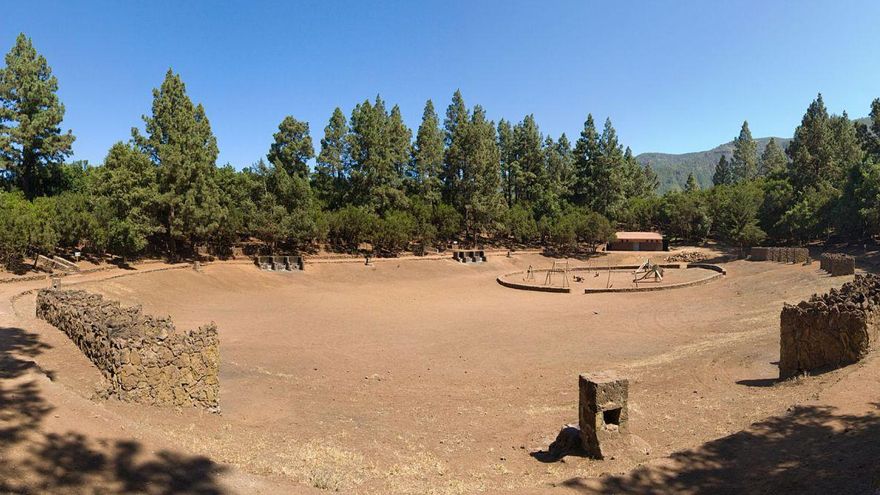
Enjoying camping holidays is a very attractive plan, especially in places with as much scenic and natural wealth as Tenerife. To accommodate this public, the Island has 12 public camping areas, most of them with an attached recreational area that makes available stoves, untreated water, bathrooms, garbage containers and other essential services.
In order to offer rigorous and updated information on the state of these spaces, the official platform of the Cabildo Natural Environment and Security area, Tenerife ON, includes in its equipment section the camping areas that are available to the publicthe requirements to reserve a place, as well as all the information so that they can be used safely and responsibly.
The camping areas are divided into two categories depending on the type of overnight stay. The first is Camping with a booth and/or caravan, which has six areas: Arenas Negras (municipality of Garachico), El Lagar (Icod de Los Vinos), Las Raíces (El Rosario), La Caldera (La Orotava), Las Lajas (Vilaflor) and Chío (Guía de Isora). The second is Camping only with booth, which has another six: Ramón el Caminero (La Orotava), Las Calderetas (El Sauzal), San José de Los Llanos (El Tanque), La Tahona (San Juan de la Rambla), Fuente del Llano (Arico) and Los Pedregales (Buenavista del Norte). The most popular are Arenas Negras, with more than 5,000 visitors; Las Lajas, almost 4,000; La Caldera, almost 4,000; and Las Raíces, with 3,700. These data mark its activity since March 1, 2022, when the restrictions that limited camping in these spaces were eliminated.
Tenerife ON includes the link to the Cabildo reservation platform, the website where the necessary permits are requested to camp for a maximum of seven days. Although overnight stays are free, it is necessary to fill out a form to control capacity and security. Once inside the reservation website, interested persons must select in the calendar which days they are going to spend the night and they will be able to check how many places are available for people and caravans. Once they receive their permits, via email, they must take it digitally or printed on the days they camp.
The users of the free application or the web will be able to review the information sheet of each area, its photographs, its location on a map, the regulations by which it is governed, its accessibility, capacity and availability, the landscapes or protected spaces that it transits. , services in adjacent areas, how to access it by private or public transport, weather information and good practice advice, as well as routes that connect with these facilities. On the platform, the Cabildo also indicates which areas are partially accessible for people with reduced mobility, such as El Lagar, San José de los Llanos, La Tahona, Los Pedregales and La Caldera.
Camping in has become a highly requested activity in Canary Islands. As a complementary activity to the free camping areas, the private campsites stand out, which move more than 34,000 people a year in the Archipelago. With so many people, who also settle in the camping areas for long periods of time, the Cabildo de Tenerife offers a list of conditions to guarantee responsible use of the facilities and natural spaces.
The regulations establish the hours of stay and recommendations for the management of water and pets. To prevent firesespecially in very hot seasons, the use of fire is restricted only for cooking in the stoves intended for it in the annexed recreational area or with gas cylinders of up to 13 kilos as long as the area allows their use in safe conditions.
Other aspects that it includes are the parking of vehicles and other means of transport, tips to maintain cleanliness and reduce pollution, or guidelines for responsible use of furniture. The web platform and free application Tenerife ON makes updated, rigorous and official information from the Cabildo available to citizens to enjoy outdoor camping safely and with environmental awareness. It is an essential tool for leisure activities in nature, which is already used by more than 10,000 people.
















